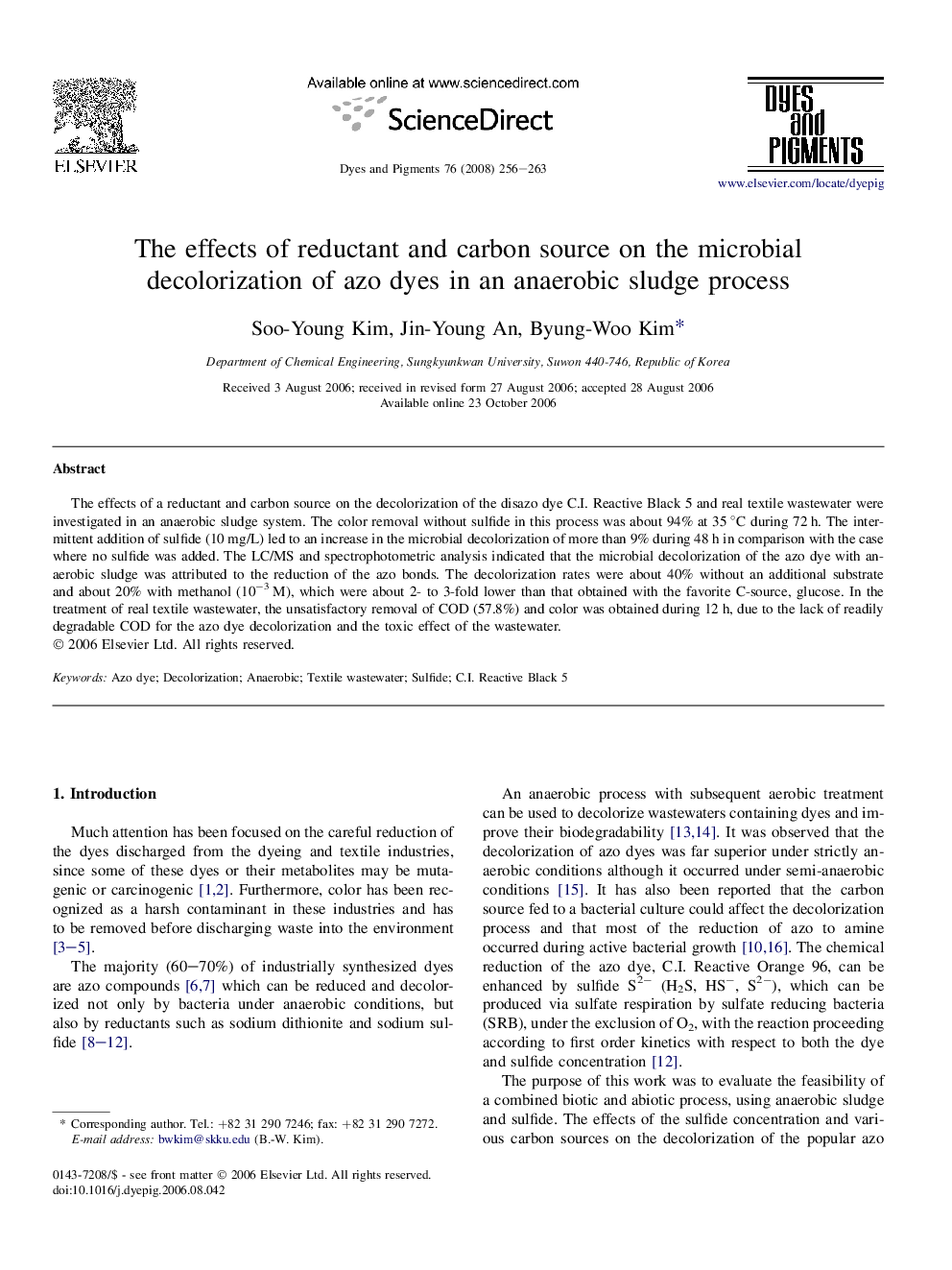| Article ID | Journal | Published Year | Pages | File Type |
|---|---|---|---|---|
| 178213 | Dyes and Pigments | 2008 | 8 Pages |
The effects of a reductant and carbon source on the decolorization of the disazo dye C.I. Reactive Black 5 and real textile wastewater were investigated in an anaerobic sludge system. The color removal without sulfide in this process was about 94% at 35 °C during 72 h. The intermittent addition of sulfide (10 mg/L) led to an increase in the microbial decolorization of more than 9% during 48 h in comparison with the case where no sulfide was added. The LC/MS and spectrophotometric analysis indicated that the microbial decolorization of the azo dye with anaerobic sludge was attributed to the reduction of the azo bonds. The decolorization rates were about 40% without an additional substrate and about 20% with methanol (10−3 M), which were about 2- to 3-fold lower than that obtained with the favorite C-source, glucose. In the treatment of real textile wastewater, the unsatisfactory removal of COD (57.8%) and color was obtained during 12 h, due to the lack of readily degradable COD for the azo dye decolorization and the toxic effect of the wastewater.
